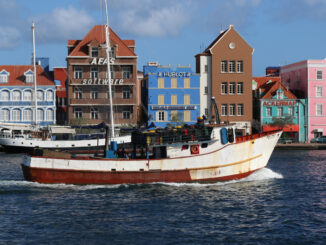WILLEMSTAD, Curacao — For decades, The Rif Fort guarded Saint Anna Bay and the city of Willemstad. Today, the historic structure no longer deters visitors to the island; it welcomes them.
Lt. Gen. Baron Krayenhoff built The Rif Fort circa 1828 on the Otrabanda side of the Saint Anna Bay (Sint Anna Baai in Dutch) to protect the island from invasion by pirates and other enemies of The Netherlands. Interestingly, Otrabanda is the newer portion of Willemstad and was founded in 1707. Its name means “other side” in Papiamento.
The Rif Fort, along with the city center, is designated as a UNESCO World Heritage site.
In order to understand The Rif Fort’s significance to Willemstad and the island of Curaçao, it is important to first take a step back in history. The Spanish regarded Curaçao as worthless because it lacked large gold deposits, but the Dutch realized the island’s importance because of Saint Anna Bay, a deep water inlet that leads to Schottegat, a large harbor.
The Dutch took control of Curaçao in 1634, and they immediately built Fort Amsterdam on the Punda side of the island’s newly founded capital city, Willemstad. Nearly two centuries later, they built Water Fort at the mouth of Saint Anna Bay.
Around the same time, the islanders built The Rif Fort across the harbor from Water Fort. With two forts at the mouth of Saint Anna Bay, it was now difficult for enemy ships to enter the harbor. But in case any might try, The Rif Fort was home to a chain that could stretch across the harbor to essentially “lock” the waterway. The building that housed the chain was demolished in 1928.
After the completion of The Rif Fort, soldiers who lived on the Punda side of the bay moved to the new fort. Some of the soldiers moved back across the bay in 1859. The Rif Fort’s barracks were razed 1928.
In 1908, the fort began a new use as the home to a radiotelegraphy station, allowing islanders to send messages via radio signal as opposed to via wire. During World War II, the radio station “Curom” used The Rif Fort as a base of operations.
The Rift Fort measures 314 feet by 98 feet, and its walls are nearly five feet thick. At one point, there were 56 cannons at The Rif Fort, and while most of them have been lost to history, at least three original cannons were uncovered in the area and are on display at The Rif Fort.
With the completion of Renaissance Curaçao Resort & Casino, The Rif Fort will become part of the resort’s shopping and dining attractions, replacing soldiers and cannon fire with music, shops and restaurants.



